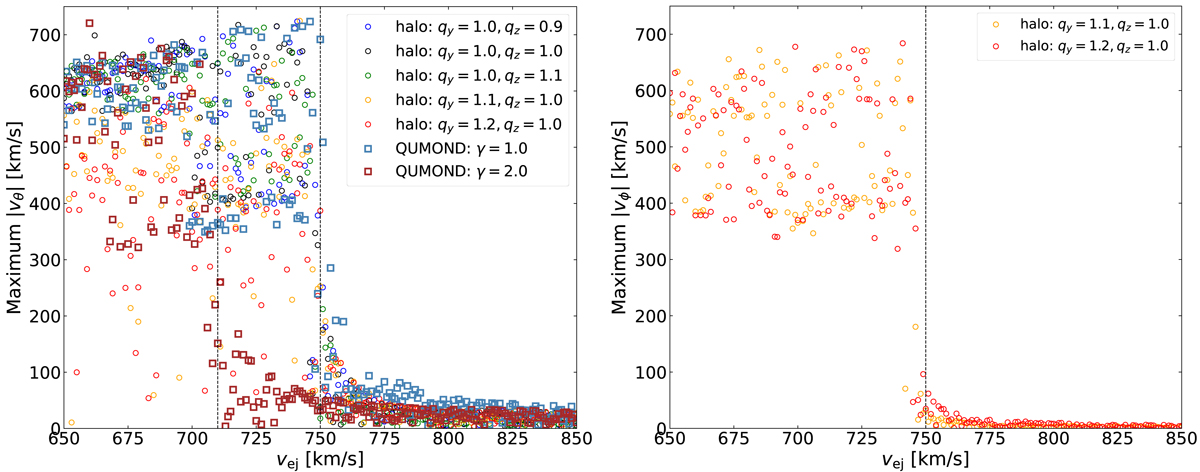Fig. 6.

Download original image
Left panel: maximum values of the latitudinal velocity components, |vθ|, of 4 M⊙ HVSs as a function of their ejection velocities, vej, in Newtonian gravity with different shapes of the dark matter halo and in QUMOND with γ = 1 and γ = 2; symbols and models are detailed in the inset. The vertical scatter in the plot originates from the random directions of the star ejection. The vertical dotted lines indicate vej = 710 and vej = 750 km s−1. In all the models except QUMOND with γ = 2, the maximum |vθ| substantially drops for stars with vej ≳ 750 km s−1. For QUMOND with γ = 2, the maximum |vθ| drops for stars with vej ≳ 710 km s−1. Right panel: maximum values of the azimuthal velocity components, |vϕ|, of 4 M⊙ HVSs as a function of their ejection velocities, vej, in two Newtonian gravity models where the axes of symmetry of the baryonic matter and of the dark matter halo are misaligned. The other models considered in the left panel do not appear because they are axisymmetric and have zero |vϕ| values. The vertical scatter originates from the random directions of the star ejection. The vertical dotted line indicates vej = 750 km s−1.
Current usage metrics show cumulative count of Article Views (full-text article views including HTML views, PDF and ePub downloads, according to the available data) and Abstracts Views on Vision4Press platform.
Data correspond to usage on the plateform after 2015. The current usage metrics is available 48-96 hours after online publication and is updated daily on week days.
Initial download of the metrics may take a while.


